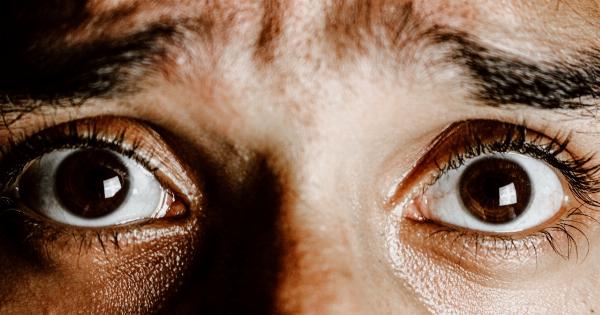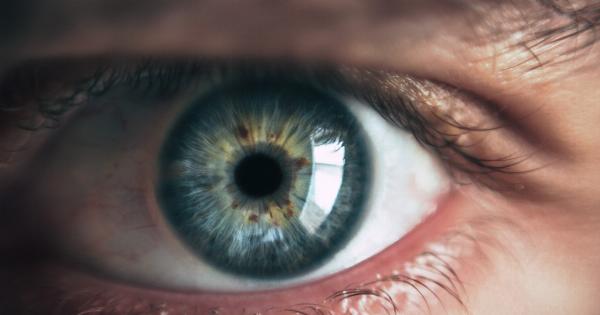Our sense of sight is arguably one of the most important and cherished senses. It allows us to perceive the world around us, appreciate the beauty in nature, and connect with others through eye contact.
However, in today’s modern world, our sight is constantly under attack from various sources. From harmful blue light emissions to everyday habits, there are numerous dangers lurking in our sight that we need to be aware of and take precautions against.
The Advent of Digital Screens
In recent years, the use of digital screens, such as smartphones, laptops, and tablets, has skyrocketed. While these devices have undoubtedly improved our lives in many ways, they also pose a serious threat to our vision.
The screens emit high-energy blue light, which can penetrate deep into the eye and cause damage to the light-sensitive cells in the retina.
Excessive exposure to blue light has been linked to a range of visual problems, including digital eye strain, blurred vision, dry eyes, and even macular degeneration.
Studies have shown that prolonged screen time, especially in poorly lit environments, can significantly increase the risk of developing these issues.
The Sun’s UV Rays
While we are aware of the damaging effects of the sun on our skin, we often overlook the harm it can cause to our eyes.
The sun’s ultraviolet (UV) rays can cause a variety of eye conditions, including cataracts, macular degeneration, and even cancerous growth on the eye’s surface.
To protect our eyes from the sun’s harmful UV rays, it is essential to wear sunglasses with proper UV protection. Many sunglasses on the market claim to offer UV protection, but not all live up to this promise.
It is important to choose sunglasses that block 100% of both UVA and UVB rays.
Poor Lighting Conditions
Another significant danger to our sight lies in the lighting conditions we expose ourselves to on a daily basis. Working or reading in dimly lit environments can lead to eye strain, difficulty focusing, and headaches.
On the other hand, excessively bright lights can cause discomfort and glare, making it challenging to see clearly.
To minimize the risks associated with poor lighting, it is crucial to ensure a well-lit environment that is neither too bright nor too dim.
Natural daylight is always the best option, so whenever possible, position yourself near a window or consider using full-spectrum lighting, which simulates natural daylight.
Unhealthy Lifestyle Habits
Our lifestyle habits also play a significant role in the health of our eyes. Smoking, for instance, has been proven to have a detrimental effect on eye health. It increases the risk of developing cataracts, macular degeneration, and other vision problems.
Quitting smoking can greatly reduce these risks and improve overall eye health.
Inadequate nutrition can also have a negative impact on our vision. A diet lacking essential nutrients, such as vitamins A, C, and E, zinc, and omega-3 fatty acids, can increase the risk of developing various eye conditions.
Incorporating foods like leafy greens, fish, citrus fruits, and nuts into our diet can help protect our vision and promote eye health.
Preventing Eye Injuries
Accidents can happen at any time, and when it comes to our eyes, the consequences can be devastating. Simple precautions can go a long way in preventing eye injuries.
When engaging in activities that pose a risk to the eyes, such as playing sports, working with power tools, or gardening, wearing protective eyewear is crucial. Safety goggles or glasses can shield the eyes from flying debris, chemicals, and other hazards.
The Importance of Regular Eye Exams
Regular eye exams are not only the key to maintaining good vision, but they can also detect early signs of eye diseases and conditions. Many eye diseases, such as glaucoma and macular degeneration, do not show symptoms in their early stages.
However, through a comprehensive eye exam, these conditions can be detected and treated before they cause irreversible damage.
Eye exams are particularly important for individuals with risk factors, such as a family history of eye diseases or certain medical conditions like diabetes.
It is recommended to undergo a comprehensive eye exam at least once every two years, or as advised by an eye care professional.
The Rise of Myopia
One particular eye condition that has seen a drastic increase in recent years is myopia, also known as nearsightedness. Myopia is characterized by blurred vision when looking at distant objects, while objects up close may appear clear.
Studies have linked the rise in myopia rates to factors such as increased screen time, lack of outdoor activities, and prolonged near work activities like reading or studying.
This has become a global concern, with an estimated five billion people expected to be myopic by the year 2050.
To help prevent the onset or progression of myopia, it is essential for both children and adults to spend more time outdoors, maintain proper distance from screens, and take regular breaks to rest their eyes.
Conclusion
Our sight is invaluable, and protecting it should be a top priority. By being aware of the dangers lurking in our sight and taking appropriate precautions, we can safeguard our vision and ensure the health of our eyes for years to come.





























